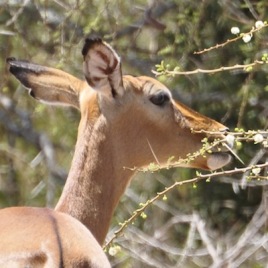A new study shows the presence – or absence – of carnivores can have a big impact on how many and what kind of trees grow in a landscape. Working in central Kenya, researchers looked at different tree species – with or without protective thorns – in areas where herbivores get eaten by their predators, […]
Tag: evolution
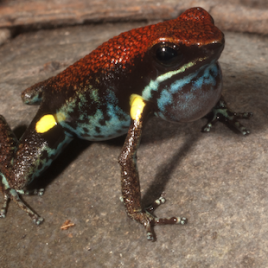
The poisonous singing frog
Poisonous and colourful frogs have more diversified mating calls than their non-poisonous counterparts, a new study shows. Researchers explain that when frogs evolve these kind of anti-predator strategies (bright colours and poison), they decrease the risk of being eaten by predators and are rewarded for more showy mating signals. Original research paper published in Proceedings of […]
Do STIs influence the evolution of monogamy?
One might think that the rate of sexually transmitted infections (STIs) could have an impact on whether an organism evolves monogamous behaviour, but a new study shows that it’s likely not as important as other factors. Researchers built a mathematical model to assess whether the benefit of reducing infection risk via monogamous behaviour outweighs the […]
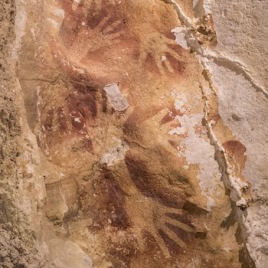
Rock art of ages – cave paintings from Indonesia
Cave paintings on the Indonesian island of Sulawesi date back nearly 40,000 years, on par with the oldest known human artwork from caves in Europe. The paintings include stencils of hands that date back as far as 39,900 years ago, making them the oldest known hand stencils. The paintings also include representations of a babirusa, […]

Vibration is key to wind pollination
If you’re a plant, and the animals or insects that pollinate you are disappearing or gone, your next best option might be wind pollination, and a new study sheds light on what adaptations are needed to make this transition. Researchers looked at flowers of English plantain, which like most wind-pollinated plants evolved from an animal-pollinated […]
New rare genetic disorder traced to early Quebec settlers
A rare genetic disorder can be traced to early settlers in Quebec and their European ancestors according to a new study. Researchers have identified 16 people from Eastern Quebec of French descent who have Chronic Atrial and Intestinal Dysrhythmia. The disorder, also called CAID syndrome, is a combination of heart arrhythmia and intestinal obstruction. Researchers […]
How railways helped AIDS spread in Africa
The HIV pandemic with us today may have begun its global spread from Kinshasa, the capital of the Democratic Republic of the Congo (DRC) around 1920, according to a new study. A team of researchers have reconstructed the genetic history of the HIV virus by analyzing gene sequences found in a major HIV database. The authors […]
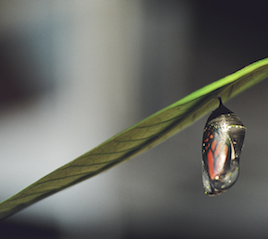
On the origins of the monarch butterfly
Monarch butterflies originated in North America 20,000 years ago at the end of the last glacial maximum before dispersing out to locations around the world, a new study shows. The authors sequenced the whole genome of 101 monarch butterflies from around the world to better understand the genetic basis of its migration patterns. The researchers […]
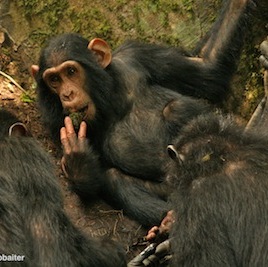
Roots of culture: How chimps learn from each other
It’s long been suspected that tool use in chimps is passed on socially, but a new study catches them in the act and puts a number on the impact. Researchers observing chimps in Uganda noticed that when one adult male discovered a new way of using leaves and moss to soak up water for drinking, […]
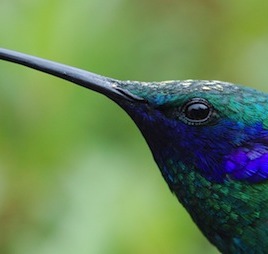
David vs. Goliath: How small birds compete
One might think that larger birds invariably win fights with smaller ones, but a new study explains why that is not always the case. Researchers studied vultures at carcasses, hummingbirds at nectar sources, as well as antbirds and woodcreepers at army ant swarms to discover that some small birds have evolved ways to beat their opponents. […]
Chemicals could help bee colonies fight mite infestations
Researchers have identified certain chemical compounds that could help fight infestations of the parasitic Varroa destructor mite, a major pest for beekeepers. The mites use smell to distinguish between different worker types in the bee colony, preferring younger ‘nurse’ bees over older foragers. The team found that treating the bees with certain chemical compounds confused […]
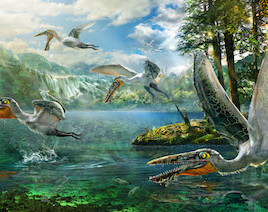
New Pterosaur – Avatar style
Researchers have found deposits of a new species of pterosaur, a flying reptile that lived about 120 million years ago. This new species was named Ikrandraco avatar for it’s similarities to the ‘ikran’ flying creatures in the 2009 Avatar movie and to a dragon (draco). The fossils were found in Northeastern China. Original research paper published […]
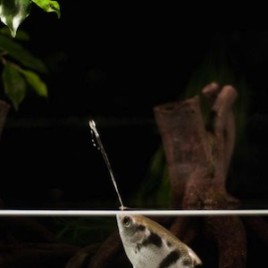
Archerfish are more skillful than previously thought
Archerfish use jets of water to shoot down insects for dinner, but new research shows they are more skilled at this than previously thought. Researchers trained archerfish to hit targets ranging in height from 20 to 60 centimeters from a precise location, and monitored how they produce the jet. They found that the fish adjust […]
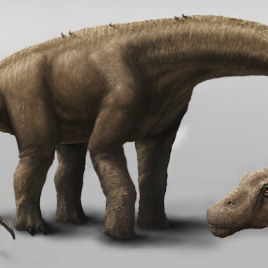
Colossal fossil: 26 meter dinosaur discovered
International scientists have found a new species of dinosaur in Argentina, named Dreadnoughtus, which may represent one of the most complete examples of gigantic titanosaurian sauropod dinosaurs ever discovered. It lived in the southern continents over 66 million years ago, and was one of the biggest creatures ever to walk the Earth. Dreadnoughtus was the most massive land […]
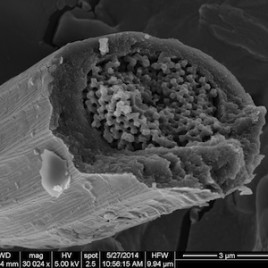
Light-scattering crystals found in Canadian fossil weevils
Scientists have found unique light-scattering crystals in a 700,000-year-old fossilized bug from Gold Run, Yukon. Modern weevils also produce such crystals, but until now not much was known about their evolution. The crystals exploit quantum phenomena to shine bright red and green when examined closely, but from afar the colours blend to produce a muddy brown […]
Genetic studies trace shifting populations in Canada’s Arctic
A new genetic study has clarified the relationships between the ancient and modern cultures in Canada’s Arctic. The results confirm that a single group – known as Paleo-Eskimo – arrived around 3000 BCE and disappeared around 1300 CE when a new group arrived from northern Alaska, the ancestors of today’s Inuit. Genetic information shows that […]
